What are the perfect perennial flowers for zone 7?
Everblooming daylilies.
Take, for instance, apricot sparkles. This daylily is a winter dormant, diploid plant that blooms apricot flowers. The blooms have dainty ruffly edges and cheerful yellow-tinged throats. As the sunlight bounces off the colors and texture, you will see a true sparkle!
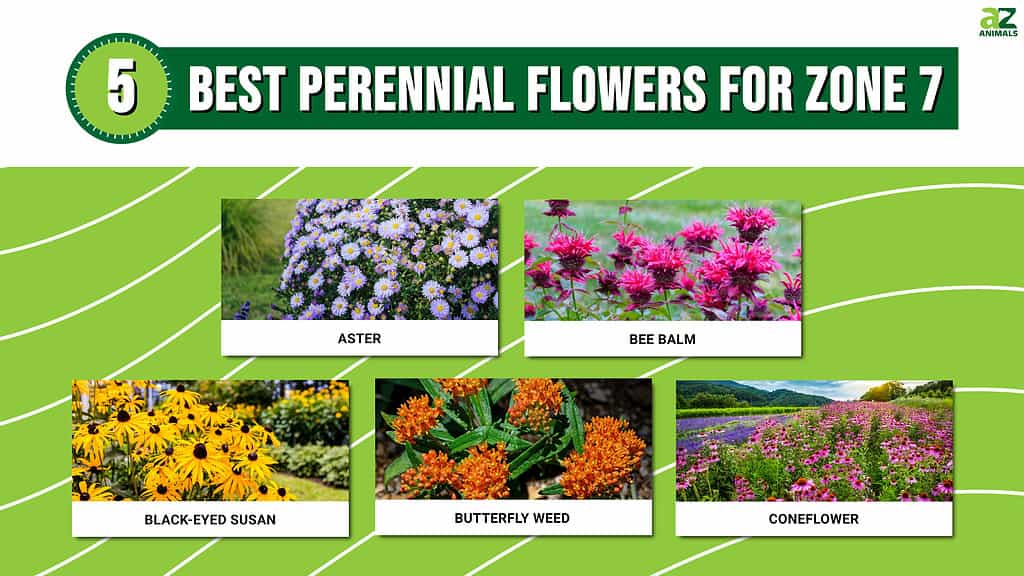
What other perennials can handle zone 7 weather? Read on to find out!
1. Aster
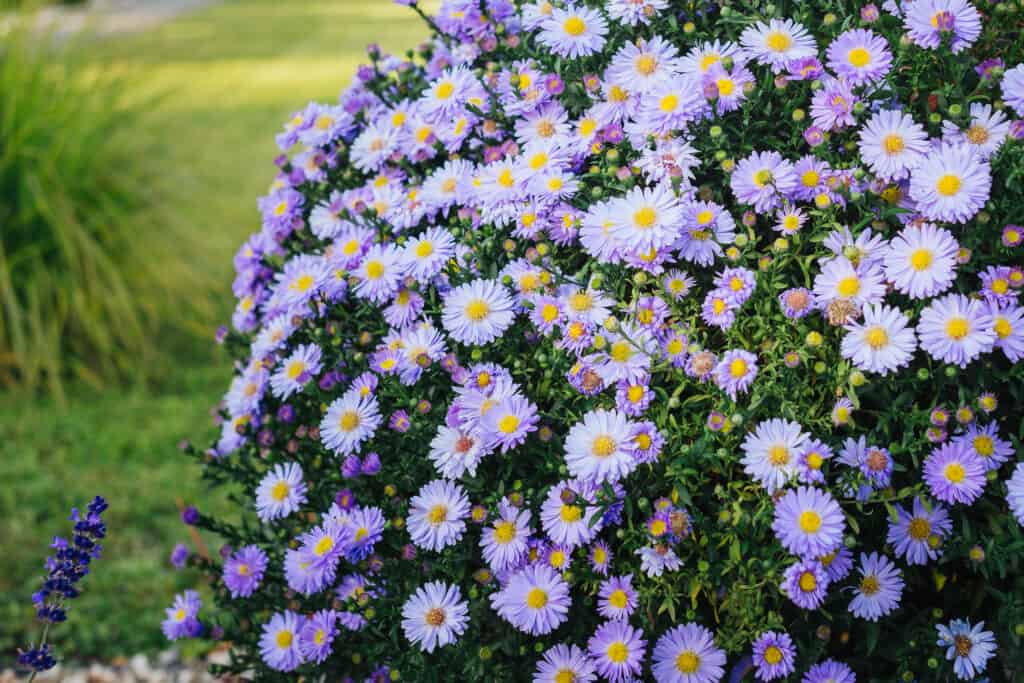
The aster plant is relatively low-maintenance.
©Open_Eye_Studio/Shutterstock.com
Asters are easy to grow and do well in zones 7-9. They come in various colors: blue, white, pink, and purple. Asters make excellent cut flowers and can be used in arrangements or left to naturalize in the garden.
When planting, be sure to choose a location that gets plenty of sunlight and has well-draining soil. Aster plants typically bloom from mid-summer to fall. To encourage blooming, deadhead spent flowers regularly.
Asters are relatively low-maintenance plants. However, they can be susceptible to powdery mildew and other diseases if not properly cared for. Be sure to water your asters at the base of the plant rather than from above to avoid getting water on the leaves, which can lead to disease. Also, ensure the plants have plenty of airflow to prevent fungal growth.
2. Bee Balm
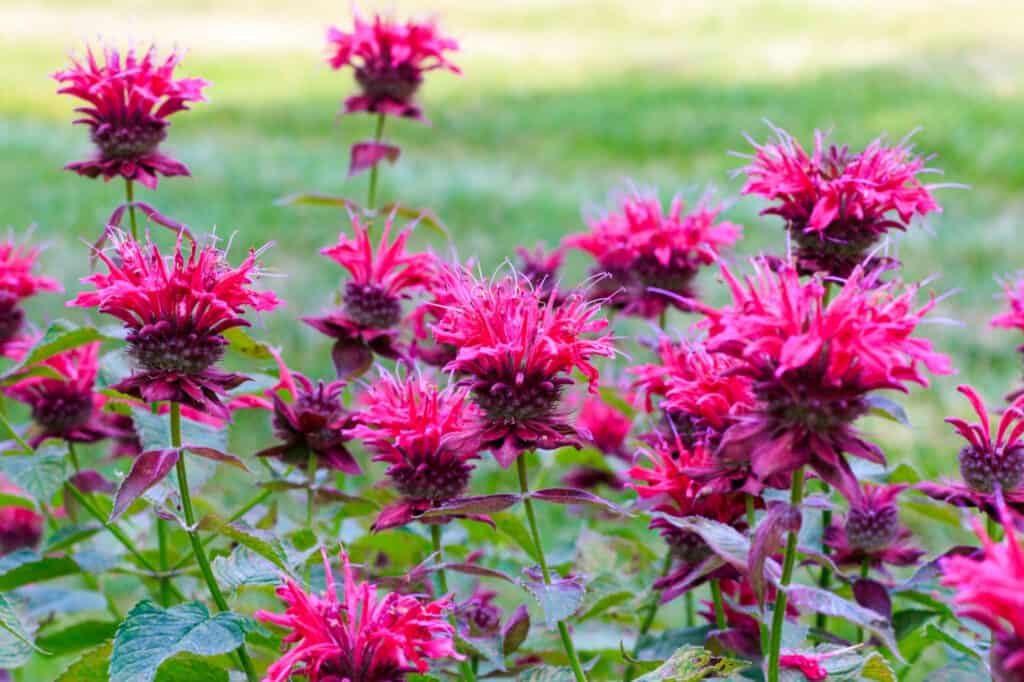
Bee balm comes in many colors.
©Bryan Pollard/Shutterstock.com
If you’re looking for an ornamental plant that’s also functional, bee balm is a great choice. Its nectar-rich flowers attract bees, hummingbirds, and butterflies, making it a valuable addition to the garden.
Bee balm is a hardy perennial; it’s drought-tolerant and can handle dry conditions. Be careful where you plant these perennials, though. This perennial can be invasive, so plant it in an area that won’t take over the garden. One of the biggest mistakes gardeners make is not giving bee balm enough room to grow. Give bee balm roots plenty of space.
Bee balm is a member of the mint family, and it has a similarly invigorating scent. Some people use bee balm as a culinary herb, adding it to salads or as a garnish. Thanks to its flavonoids, lemon bee balm is particularly flavorful in dishes. The flowers of bee balm are beautiful, but they don’t last long. Cut them and bring them inside to enjoy them indoors.
3. Black-Eyed Susan
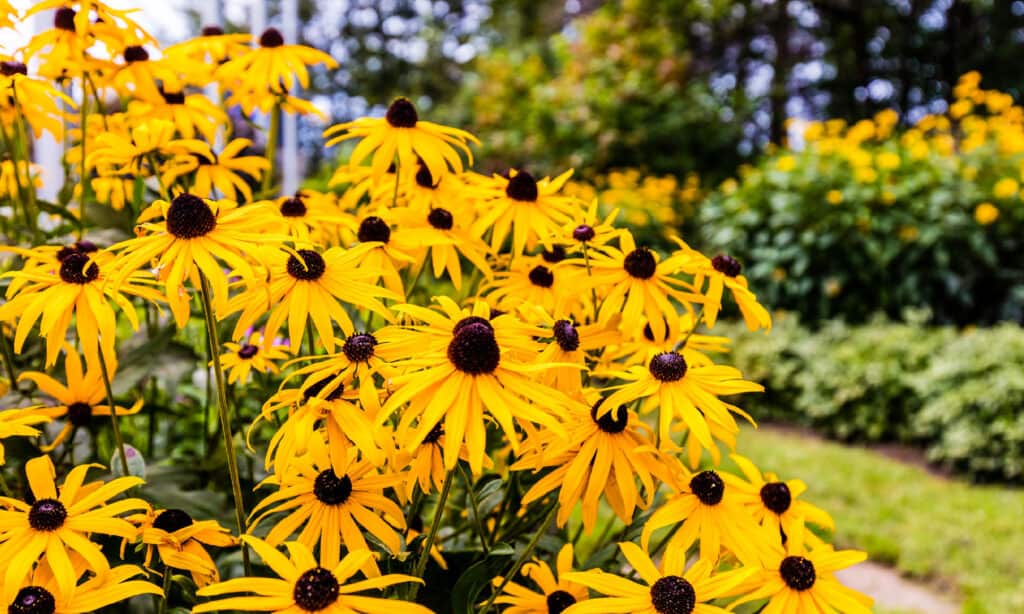
Deadhead black-eyed Susans regularly to encourage blooming.
©iStock.com/Dopeyden
Black-eyed Susans are a cheerful addition to any garden. They’re easy to grow and make great cut flowers. The flowers are yellow with a black center, and they bloom from summer to fall. Black-eyed susans are drought tolerant and do well in zones 4-9.
To grow the best black-eyed Susan in zone 7, it’s important to choose a variety that is suited for your climate. The tiger eye variety is a good choice for zone 7 gardens. This plant has deep golden flowers with brown centers. It grows about 24 inches tall and blooms from June to September.
When planting these perennial flowers for zone 7, give them plenty of room to spread out. They should be planted 18-24 inches apart. These plants do best in full sun but can tolerate some light shade. Once they’re established, they’re pretty drought-tolerant.
Water your black-eyed Susans regularly during the first growing season to help them become established. After that, they don’t need a lot of supplemental water. Fertilize them once a year in the spring with a general-purpose fertilizer. Deadhead the spent flowers to encourage more blooming. You can also cut the plants back by half after they finish blooming in the summer. This will help to keep them from getting too leggy.
4. Butterfly Weed
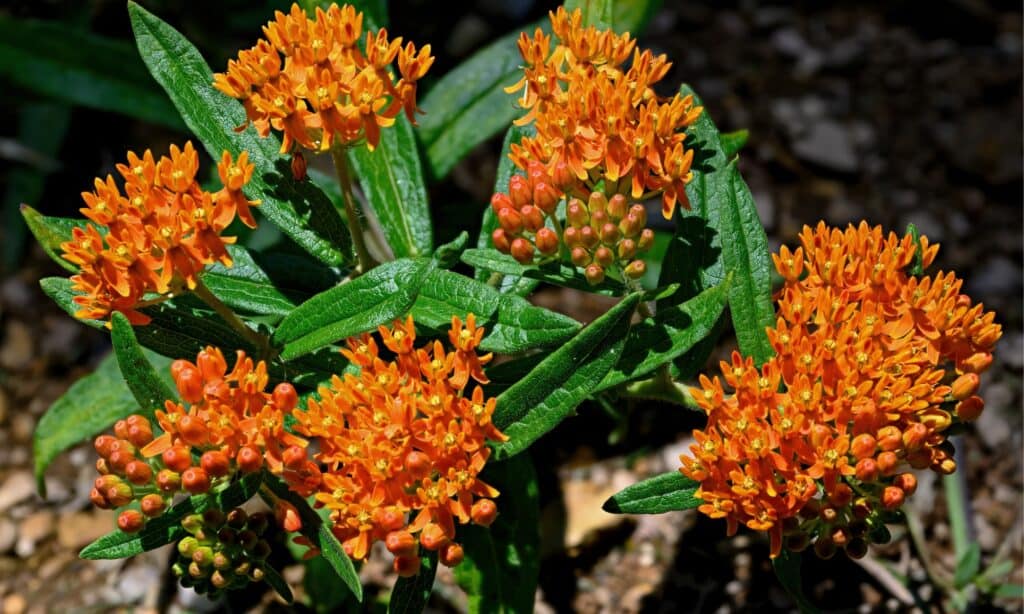
The only food source for monarch caterpillars comes from butterfly weed.
©iStock.com/McKinneMike
Butterfly weed is an important plant for butterflies. It’s the only food source for monarch caterpillars, and it’s a nectar source for adult butterflies. Butterfly weed is also drought tolerant and can handle dry conditions. It does best in full sun and well-drained soil.
For the loveliest blooms, sow seeds indoors about eight weeks before the last frost date. Plant seeds half an inch deep in a well-draining potting mix. Keep the soil moist but not wet, and place the pots in a nice warm location. You won’t have to wait long; the seeds can germinate in 14-21 days.
Once seedlings have a few sets of true leaves, transplant them into individual pots. You can divide butterfly weed in early spring or fall. When it’s time, dig up the entire plant. Carefully separate the plant into smaller sections, making sure each section has several roots attached. Then replant immediately and water well.
5. Coneflower

Since coneflower is drought-resistant, you don’t need a lot of water.
©iStock.com/Jasmina81
Coneflower is a rewarding, low-maintenance perennial flower. It comes in different colors like blue, white, and pink. Coneflowers can also be used in arrangements or left to grow naturally in the garden. They’re drought tolerant and do well in zones 3-9.
When it comes to watering needs, you’ll find that coneflowers are pretty easygoing. They don’t need a lot of water and can even withstand periods of drought. If you do choose to water them, make sure you do so at the base of the plant rather than from overhead. This will help prevent fungal diseases.
As for fertilizer, you really only need to fertilize your coneflowers once a year in the spring. A slow-release fertilizer will work well. You can also add some compost to the soil around your plants to give them an extra boost.
When it comes to deadheading, it’s not strictly necessary, but it can encourage more blooms. To deadhead, simply snip off the spent flowers at the stem. You can also let the flowers go to seed, which can be attractive in its own right and will also attract birds to your garden.
Summary Of The 5 Best Perennial Flowers For Zone 7
| Rank | Flower | Growing Conditions | Blooms |
|---|---|---|---|
| 1 | Aster | Zones 7-9, with lots of sunlight and well-draining soil | Mid-summer to fall. Colors include blue, white, pink, and purple. |
| 2 | Bee Balm | Can be invasive, so plant in an area where it won’t take over the garden | Flowers don’t last long. Cut and bring inside to enjoy. |
| 3 | Black-Eyed Susan | Zones 4-9 (tiger eye best for zone 7). Plant 18-24 inches apart. | Summer to fall. Yellow with a black center. |
| 4 | Butterfly Weed | Does best in full sun and well-drained soil | For best blooms, sow seeds indoors about 8 weeks before the last frost date. |
| 5 | Coneflower | Zones 3-9, drought-tolerant | Colors include blue, white, and pink. Use in arrangements or leave to grow in the garden. |
The photo featured at the top of this post is © iStock.com/Dopeyden
Sources
- University of Georgia, Available here: https://extension.uga.edu/publications/detail.html?number=B944
Thank you for reading! Have some feedback for us? Contact the AZ Animals editorial team.






